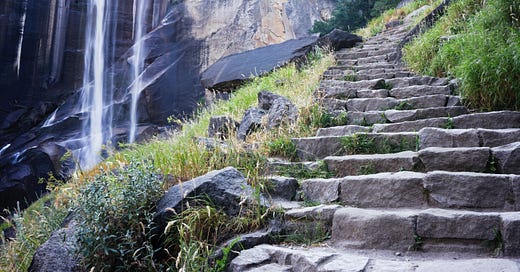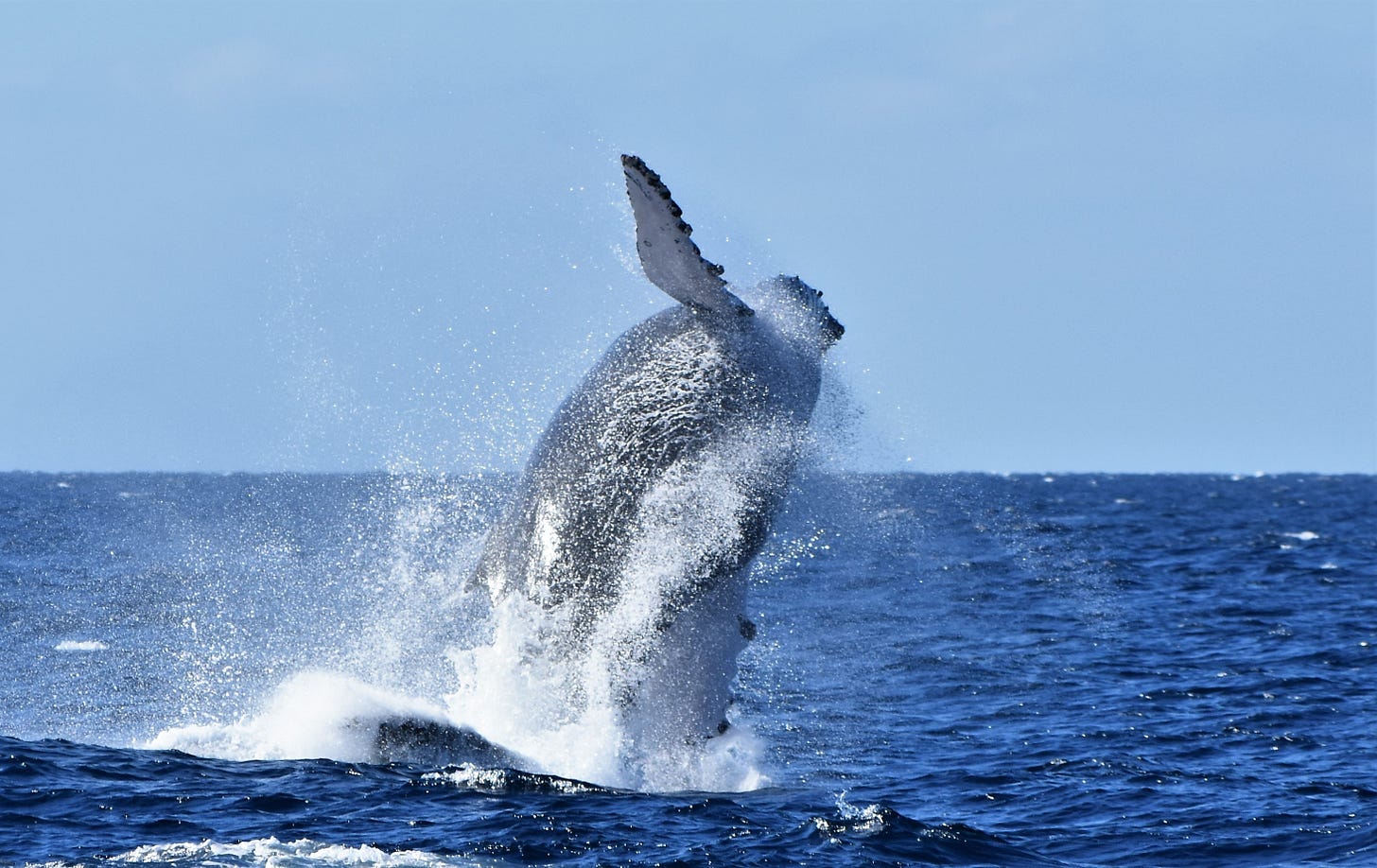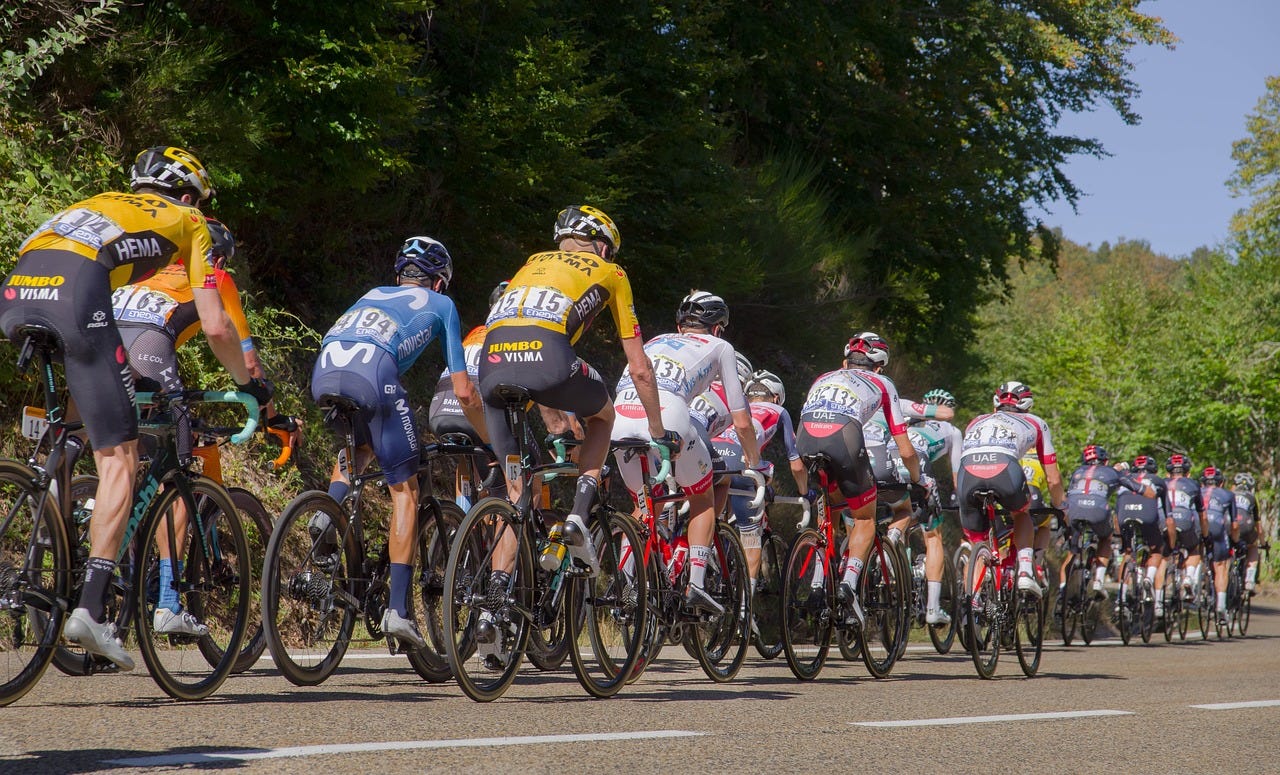I remember my first taste of what I took some time to recognise as awe. Thirty years ago, we visited Yosemite National Park. I knew very little, only that it was a must-see destination. Hubby and I started our hike early that morning, taking the switchback route up the Vernal Fall trail. About halfway up and out of breath from climbing, I stopped, turned to see where I had come from, and choked on the view. Air sucked into my lungs, my heart raced, “goosebumps,” and a sensation of chills filled me up.
I experienced a jaw-dropping sight that flatland dwellers like me could never imagine in our wildest dreams. I was totally unprepared for the majesty, the grand, the sublime.
From that day, I became an 'awe chaser'. It's like a drug. It takes hold and transports you to another world. You never want it to end.
I have chased these experiences around the world ever since.
Think natural wonders - I am currently soaking up nature in the UK's AONBs (Areas of Outstanding Natural Beauty). There's a reason 260 million people visit them every year.
Back home, the Australian annual whale migration passes my front door. Arriving at our sub-tropical latitude from July, they know they are approaching the warm waters of their holiday destination. A blow alerts us to their positions as they surface, and a breach thrills eager crowds on special whale-watching platforms on the headlands. Local whale-watching tours depart daily to bring you up close and personal with these splendid beings.
We can also wander down to our beach most mornings, coffee in hand, to experience a spectacular sunrise over the ocean, the first slice of Australia touched by the sun's rays. Alternatively, on a clear night, a full moon rise over the ocean; a huge orange ball dwarfing tall buildings never fails to astound.
Recently a tiny town in Western Australia was swelled by 20,000 people from around the world gathering to witness a minute-long total solar eclipse. I am not the only awe-chaser.
Think art - the mind is immediately drawn to the classics like Sistine Chapel or The Louvre, but it could be a book that moves us to tears. Anthony Doerr's 'All the Light We Cannot See' is a degustation of carefully curated words leaving me in awe of his craft.
Think music - Who is not impacted by Schubert's Ava Maria? For me, classical music makes my heart sing, but an opera aria pierces the soul.
Think profound human achievements - I've visited my share of castles and cathedrals, buildings from millennia ago and wonder why, with all our technology, we can't build stuff that outlasts the builder. I am most in awe of the neolithic stone formations in Brittany and the south of the UK. Awe and mystery side by side.
Every year I am transfixed by the Tour de France. Awe comes from not only the helicopter scenery but the feats of the cyclists. As an amateur cyclist, I marvel at their miraculous performances for three weeks straight.
Imagine the birth of a child, a grandchild or even a great-grandchild. Who can convey in words the swelled chest, the lump in the throat, the tears as we hold a special baby for the first time?
Then there's the Waitrose driver I watched this morning manoeuvre his exceedingly large truck through narrow London streets into an awfully small Waitrose car park, expertly backing it into the delivery dock in one go to re-supply our local grocery store. Bravo! Profound achievement.
There is no shortage of awe-inspiring 'little earthquakes in the mind' to transform us, and the benefits are scientifically proven.
In his book Awe: The Transformative Power of Everyday Wonder, Dr Dacher Keltner, a psychologist at the University of California, Berkeley, describes awe as 'the feeling of being in the presence of something vast that transcends our understanding of the world'
He depicts awe as a basic human need. He goes on to outline the eight wonders of life that are most likely to induce awe: nature, music, visual art, spirituality, mortality, epiphanies, moral beauty (e.g., courage in battle), and collective effervescence (e.g., participating in a political rally).
Similar to near-death experiences, we connect with or are touched by ‘All That Is’ and, once experienced, you cannot 'unknow'.
The experience transcends our understanding of the world. We must reconcile it with our current model of the world. It forces new mindsets.
Science is also discovering the physical, psychological and social effects of awe.
Physical - Dr. Keltner found that awe activates vagal nerves, clusters of neurons in the spinal cord that are antidotes to stress. Increased vagal tone slows our heart rate, reduces blood pressure, and deepens breathing.
In addition, neurotransmitters dopamine and oxytocin are released as we experience awe, flooding the body with feel-good chemicals.
Finally, people who experience awe more frequently in their daily lives showed lower tissue levels of interleukin-6, a pro-inflammatory cytokine associated with heart disease risk.
Psychological - In addition to the reduced physical stress, awe quiets our inner critic and puts our anxieties into perspective.
Humility is generated when we see how small we are in comparison to the vastness.
Contact with 'All That Is' can connect us with humanity and leads to a more altruistic mindset.
Creativity and curiosity are inspired, and feelings of well-being and life satisfaction are seeded.
Barbara Frederickson, in her book Positivity, would have us create portfolios of our experiences of all the positive emotions, including awe. She suggests we write about our awe experiences:
1. When have you felt intense wonder or amazement, truly in awe of your surroundings?
2. When have you been overwhelmed by greatness or beauty on a grand scale?
3. When have you been stopped in your tracks, transfixed by grandeur?
4. When have you felt part of something much larger than yourself?
Writing about them increases their potency, allowing us to relive an experience repeatedly. Even reading stories about awe can produce similar feelings.
However, we don't need to go to the Grand Canyon to experience awe. We can find it in everyday life. A sense of awe can be intentionally cultivated and strengthened by paying attention to what is - mindfulness. One simple prescription can have transformative effects: 'Look for more daily experiences of awe,' notes Keltner.
Witnessing simple acts of goodness can produce moral beauty or moral elevation. I love these Facebook pages to see examples of kindness and goodness that force a smile or a pulse of oxytocin.
Tanksgoodnews
GoodNewsCorrespondent
Recently, I came across the work of Neil Pasricha - The Book of Awesome, followed by The Book of (even more) Awesome.
They contain hundreds of bite-sized awesomenesses (if that is a word). You will smile or chuckle and want to create your own to share with others. Here are a few examples of awesomenesses:
When your fries order has a few onion rings stashed in the mix
The sound of a steak hitting the hot grill
The air just before a thunderstorm
Seeing a really happy dog out for a walk
Licking ice cream from the lid as you open a new tub
Getting the armrest at the movies
Fitting everything into the dishwasher
Whether grand or petite, awe is a gift that can cause us to smile, make us well, uplift us, recognise our shared humanity or move us to action.
My favourite Substack reads this week:
Ageism: We’ve Met The Enemy (And It’s Us) by Brian Clark, Longevity Gains
One of my favourites…the 4 way resisted walk by Mike Nelson, Mike’s Home Exercise
The Anatomy of Awe by Cathey Cone, Footnotes from the Flipside







Robin, thanks so much for your recommendation. I am just discovering your wonderful writing! I agree that we should never lose our sense of awe and we need to give ourselves opportunities to feel it! I look forward to reading moe from you!
A wide-ranging and absorbing post.